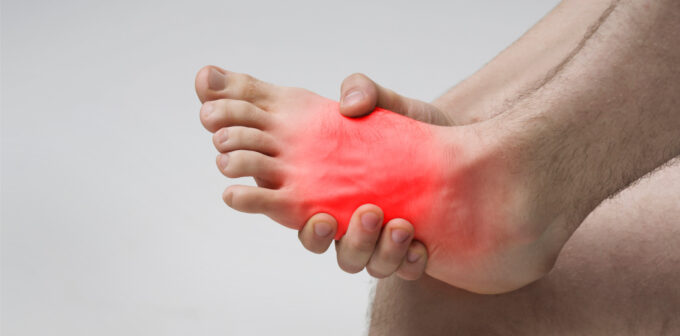And calcaneal bone marrow lesions could be an under-recognised phenotype of heel pain.
Stable supportive shoes, the biomechanics of walking and chronic heel pain were all up for discussion at the ARA conference.
Chronic Plantar Heel Pain
Physiotherapist and Menzies Institute for Medical Research PhD candidate Jason Rogers presented a paper on chronic plantar heel pain (CPHP), a condition which up to 10% of Australian adults in their lifetime.
While CPHP is commonly associated with a plantar heel spur and thickened plantar fasciae, the role of other foot tissues is poorly understood.
Mr Rogers oversaw a study which compared roughly 200 people with CPHP to a control group of 100 age- and sex-matched participants.
The researchers used MRI, ultrasound and Power Doppler ultrasound to take various measurements, including plantar fascia thickness and intrinsic signal, calcaneal bone marrow lesions, fat pad signal, plantar spurs and echogenicity, and to detect the presence or absence of vascular signal within the plantar fascia.
“Plantar fascia signal and plantar fascia echogenicity were always associated with having chronic plantar heel pain,” Mr Rogers said.
“We also see that the presence of a plantar bone marrow lesion is almost always associated with having chronic plantar heel pain, in a dose responsive way.”
Mr Rogers also said that the calcaneal bone marrow lesions could be an under-recognised phenotype of heel pain, and that this finding could have important clinical implications.
Neither having a spur nor T1-weighted fat pad signal changes were associated independently with CPHP.
Supportive footwear for knee osteoarthritis
Dr Kade Paterson, also a physiotherapist by training, presented a paper published in the Annals of Internal Medicine comparing flat flexible and stable supportive footwear for self-managing knee osteoarthritis.
“Some guidelines in the UK and US advocate stable supportive shoes with big shock absorbing soles and arch supports [for knee OA patients] based solely on expert opinion, and we’ve shown that these footwear styles are also recommended by clinicians to manage knee OA symptoms,” the University of Melbourne Senior Research Fellow said.
“However, recent research suggests that another type of shoe style, termed ‘flat flexible’, may be more beneficial.”
Because flat flexible shoes tend to be lighter, with more bend, biomechanical research shows patients who wear them have reduced knee joint loading.
This led Dr Paterson and his team to predict that wearing flat flexible shoes would lead to greater improvements in knee pain over a six-month period.
The researchers enrolled around 150 participants with knee OA and split them into ‘stable supportive’ and ‘flat flexible’ groups, with no ‘usual shoes’ control group.
“Contrary to our hypotheses, flat flexible shoes were not superior to stable supportive shoes and in fact stable supportive footwear resulted in greater improvements in walking knee pain, but not in physical function, than flat flexible shoes over six months,” Dr Paterson said.
This study provided the first randomised control trial evidence to support stable supportive shoes as a self-management tool for knee OA patients.
Other sessions
In another session, Sydney-based orthopaedic surgeon Dr Andrew Stephens covered the biomechanics of metatarsalgia.
Meanwhile, podiatry professor Deborah Turner presented on both the role of ultrasound in managing foot disorders and foot pain in psoriatic arthritis.


